So often we share photos of a home after it is built, but the building process is fascinating! So I thought I'd take a little time and share the starting process for one of our homes in New York. February is all about Net Zero Homes, so enjoy these images and stay tuned for more on building Net Zero Homes! Keuka Lake, Jerusalem, New York, Net Zero Home with Newcastle Home Construction Corp.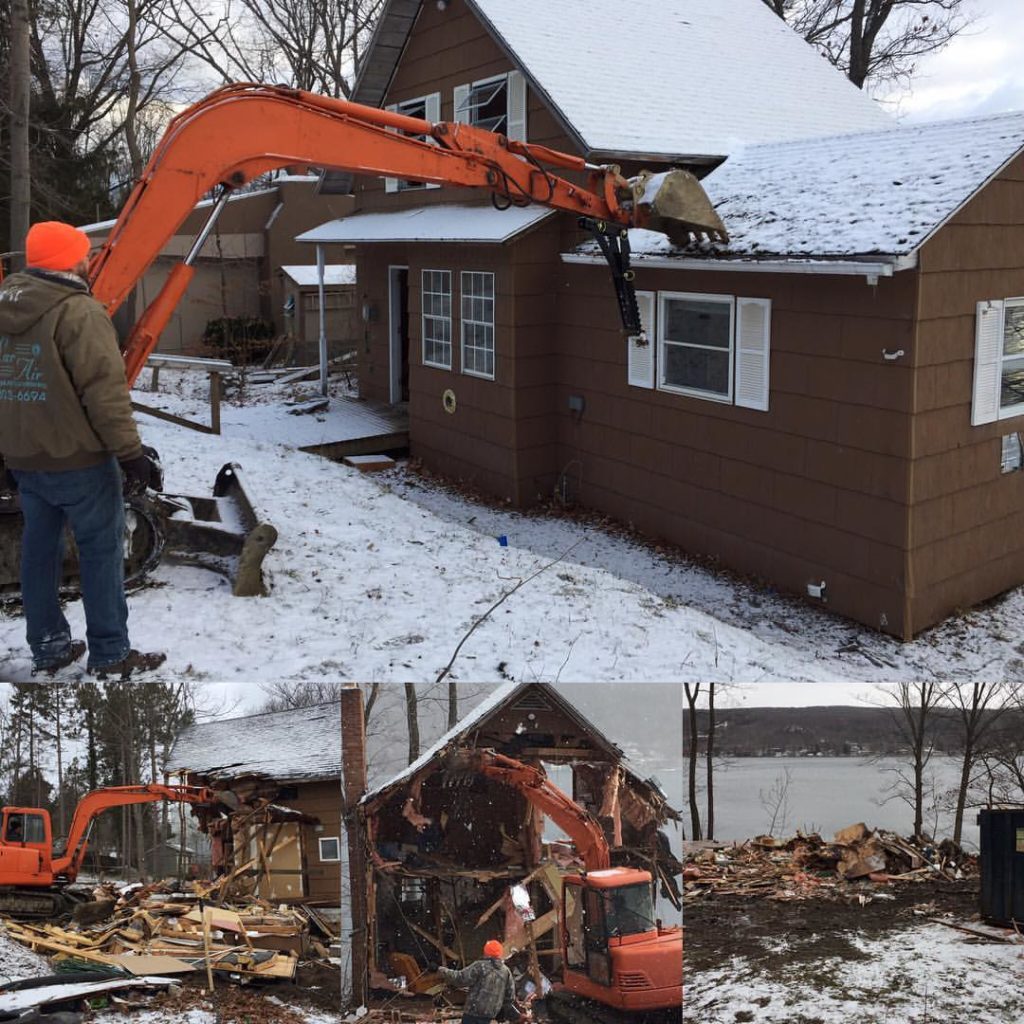 Demolition day! There was an existing structure on the property that had to come down before construction could start.
Demolition day! There was an existing structure on the property that had to come down before construction could start.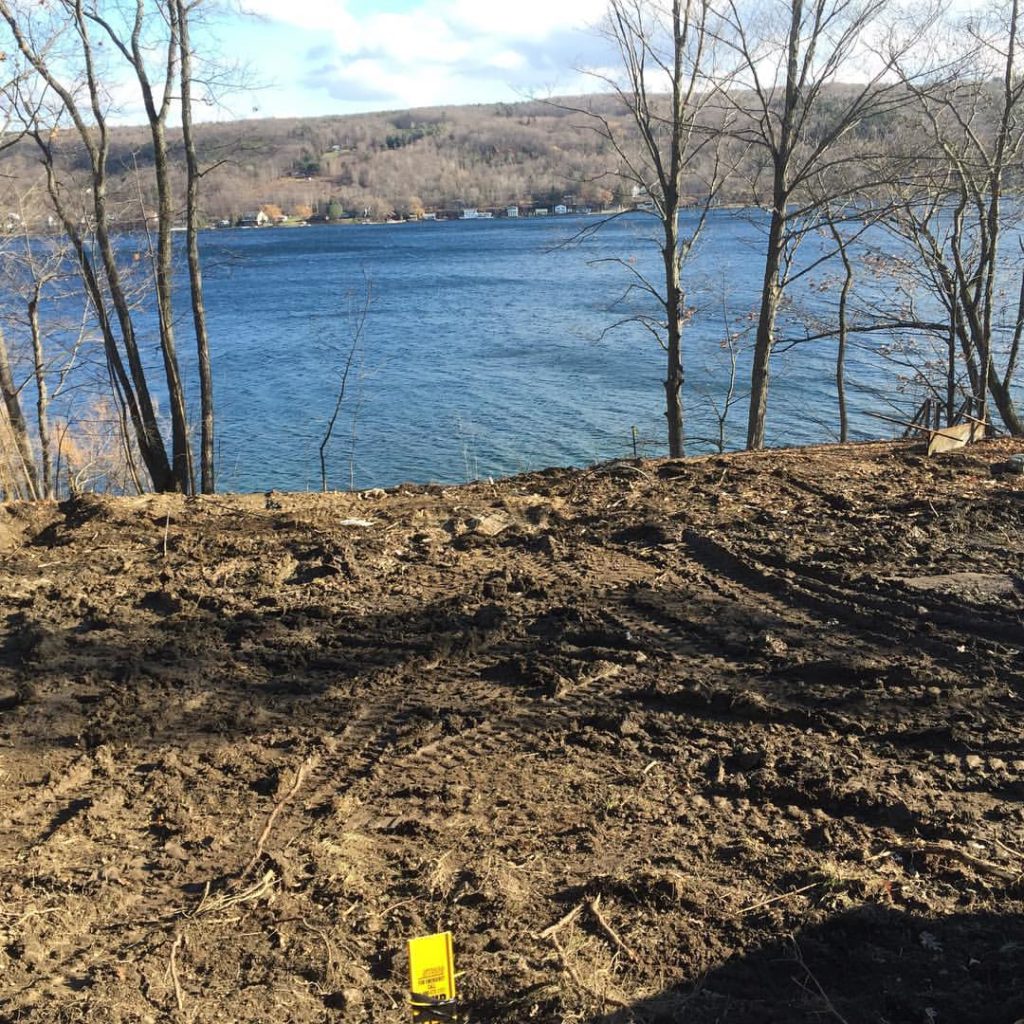 But look at that view! Beautiful Keuka Lake, Jerusalem NY
But look at that view! Beautiful Keuka Lake, Jerusalem NY Then the digging can begin. This home sits up on the hillside above the lake. So it will have a walk out basement and the first floor will be just below street level.
Then the digging can begin. This home sits up on the hillside above the lake. So it will have a walk out basement and the first floor will be just below street level. Foundation going in
Foundation going in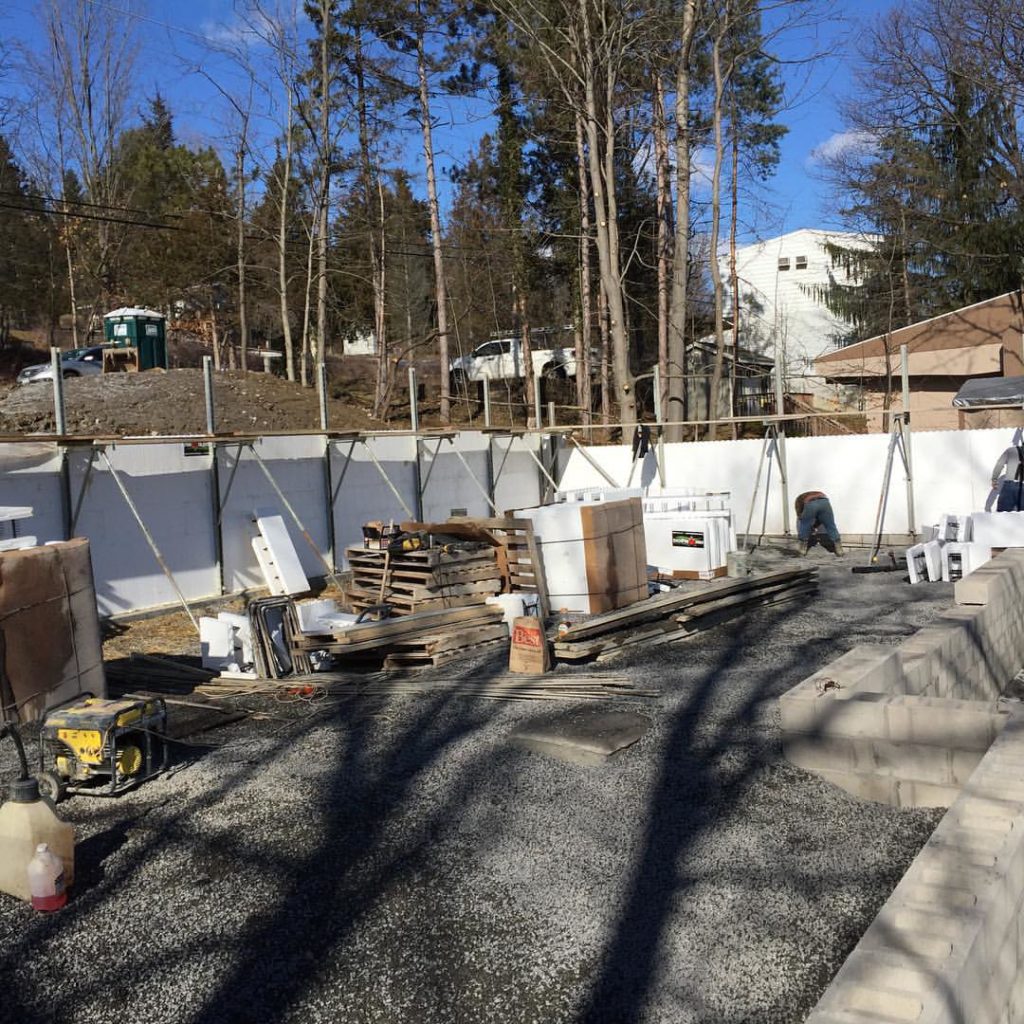 ICF's going up. In energy efficient building, we often talk about how critical it is to get the foundation right! So we have ICF block foundation on the two below grade sections with framed walls on the interior of the basement and 11 1/4" thick double framed walls on the two walk out sides of this house for an R-40 insulation value.
ICF's going up. In energy efficient building, we often talk about how critical it is to get the foundation right! So we have ICF block foundation on the two below grade sections with framed walls on the interior of the basement and 11 1/4" thick double framed walls on the two walk out sides of this house for an R-40 insulation value.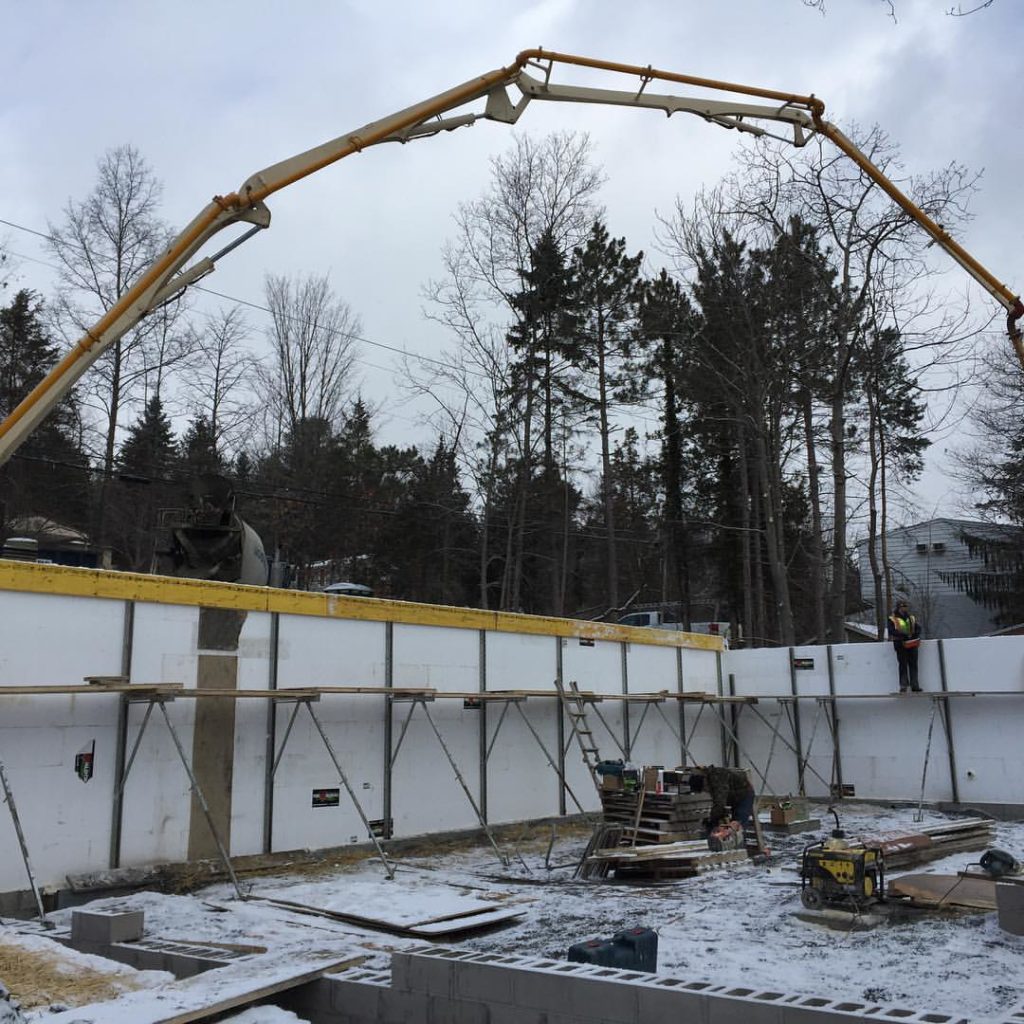 Pouring concrete in the ICF's
Pouring concrete in the ICF's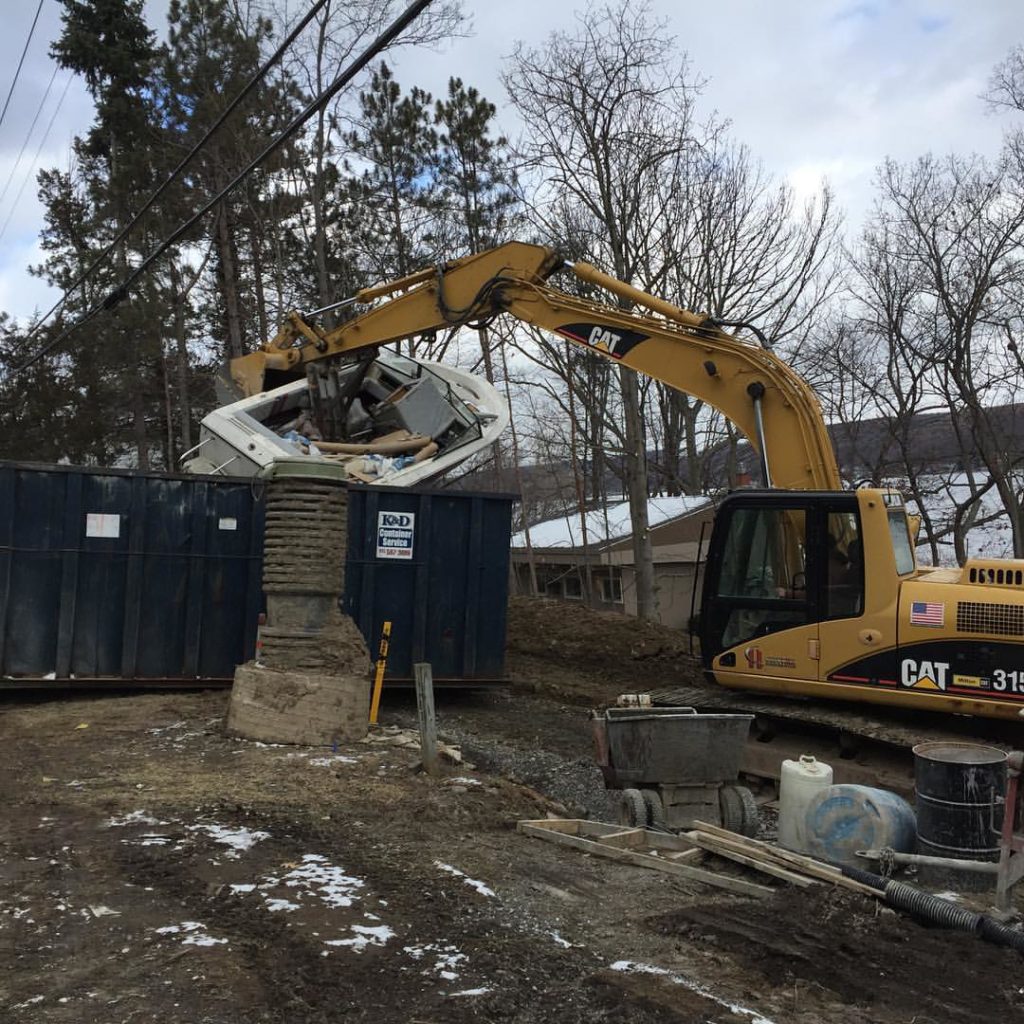 Couldn't help but share, sometimes its silly things like this on the job site that keep you motivated to build in the middle of February! There goes the derelict boat, into the dumpster.
Couldn't help but share, sometimes its silly things like this on the job site that keep you motivated to build in the middle of February! There goes the derelict boat, into the dumpster.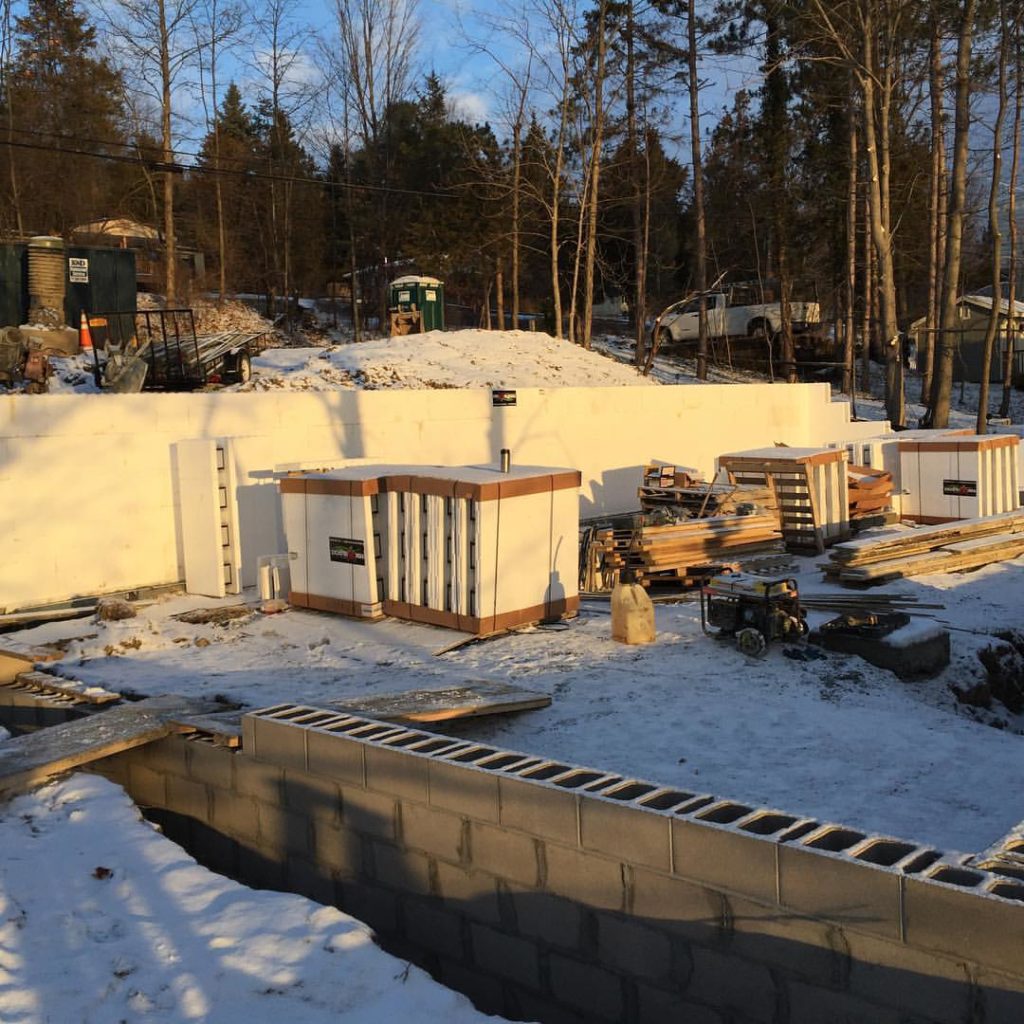 Block frost walls
Block frost walls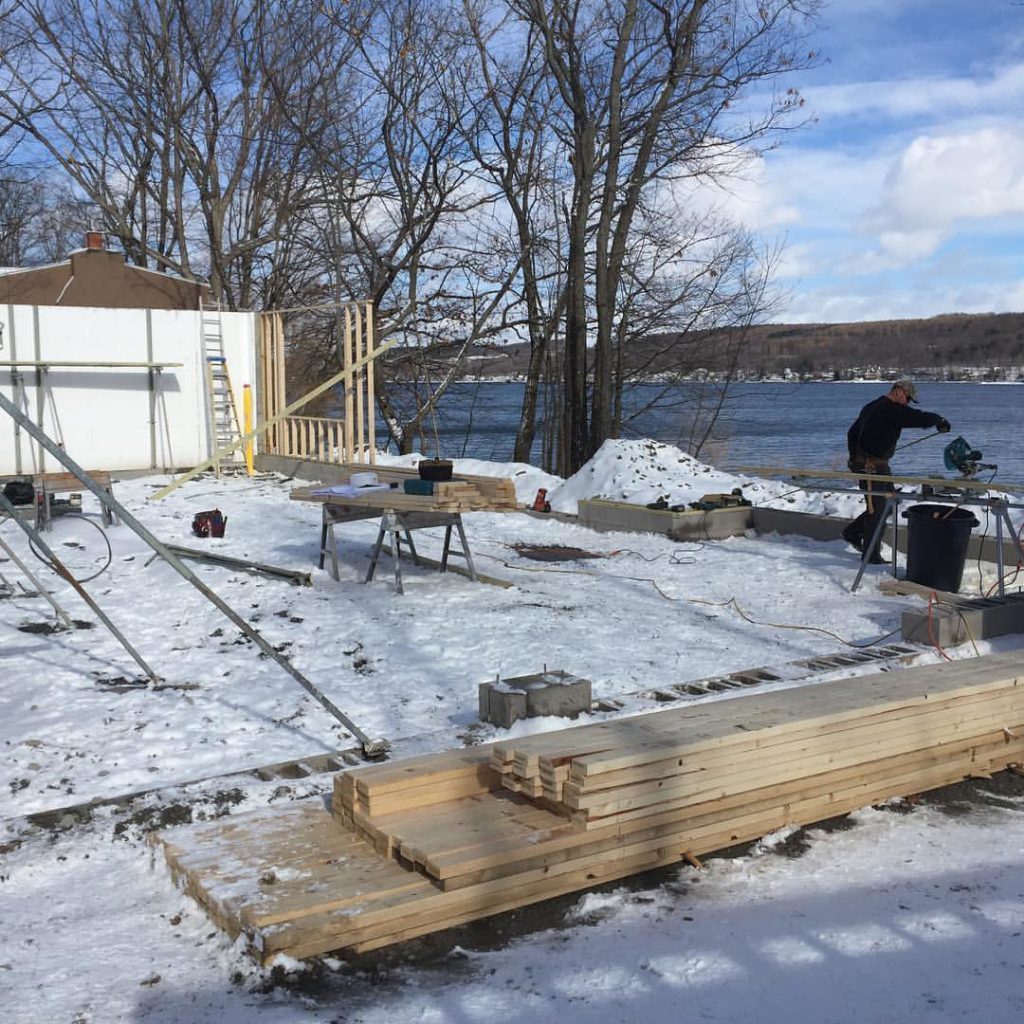 A little framing going up on the lake side.
A little framing going up on the lake side.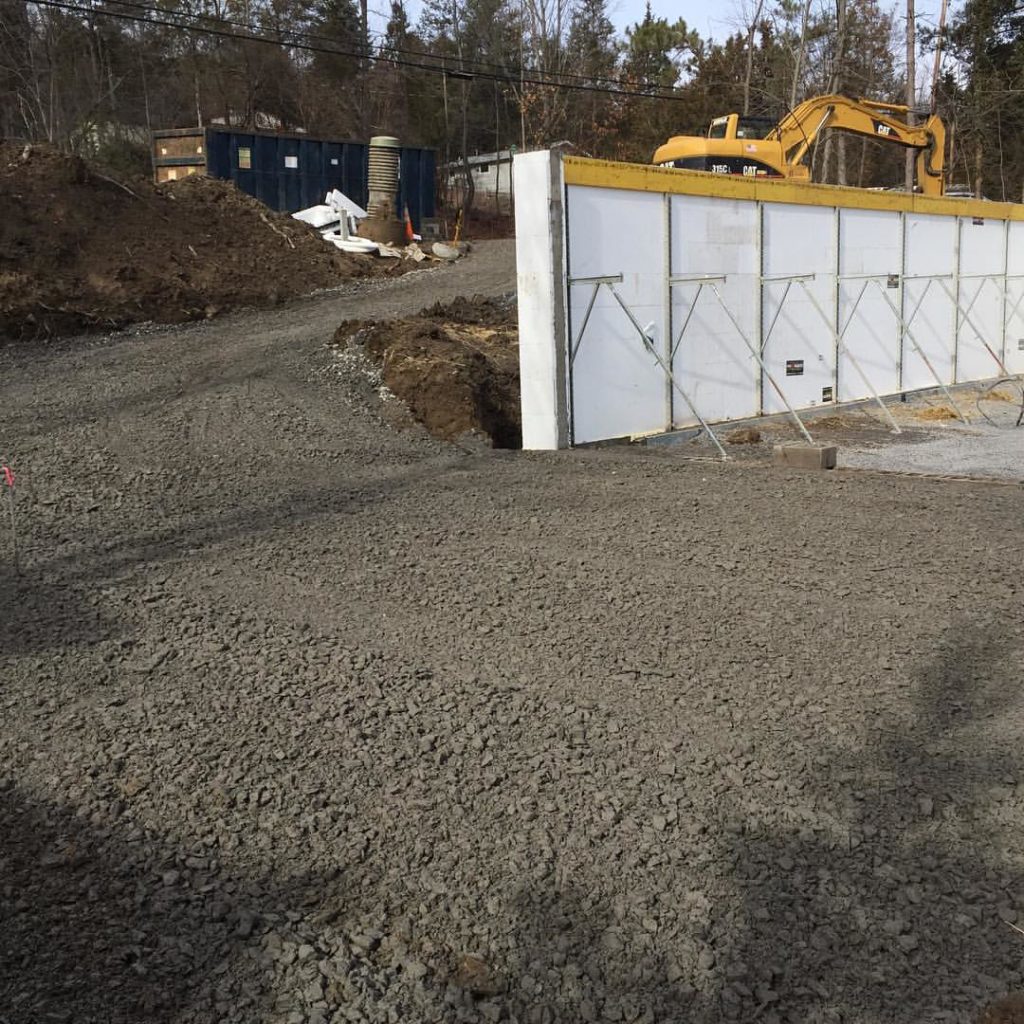 Driveway and rough grading coming down to the garage level and walk out side of the lake. It's so important to create the right type of drainage when changing levels, but especially when building on the lake. It's critical to know where your drainage is going.
Driveway and rough grading coming down to the garage level and walk out side of the lake. It's so important to create the right type of drainage when changing levels, but especially when building on the lake. It's critical to know where your drainage is going.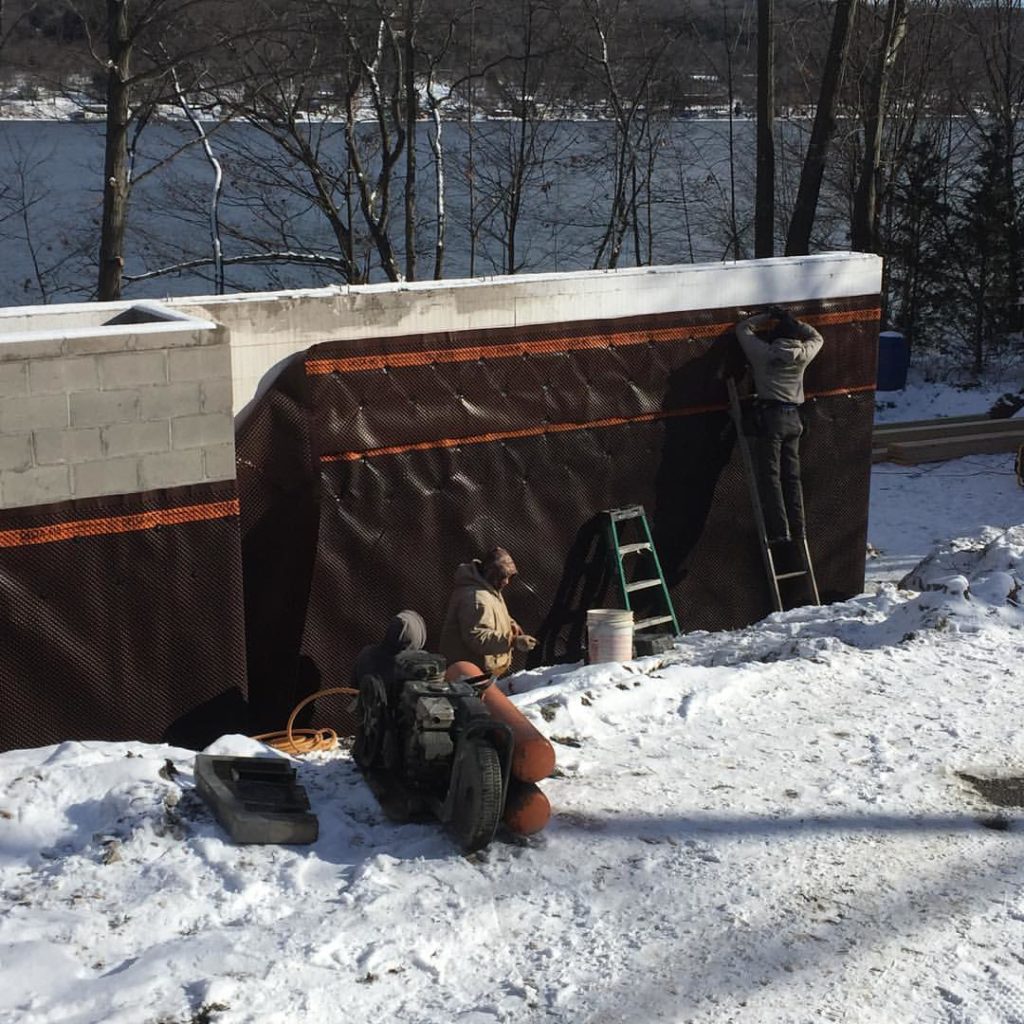 And speaking of drainage, waterproofing is absolutely critical in a Net Zero Homes. We aim for this house to be below 1-2 air changes an hour, so trapped moisture from a bulk moisture source like the ground would be a disaster. It's so important to have a water management strategy and good indoor air quality in a Net Zero Home. More on the ERV in the future!
And speaking of drainage, waterproofing is absolutely critical in a Net Zero Homes. We aim for this house to be below 1-2 air changes an hour, so trapped moisture from a bulk moisture source like the ground would be a disaster. It's so important to have a water management strategy and good indoor air quality in a Net Zero Home. More on the ERV in the future!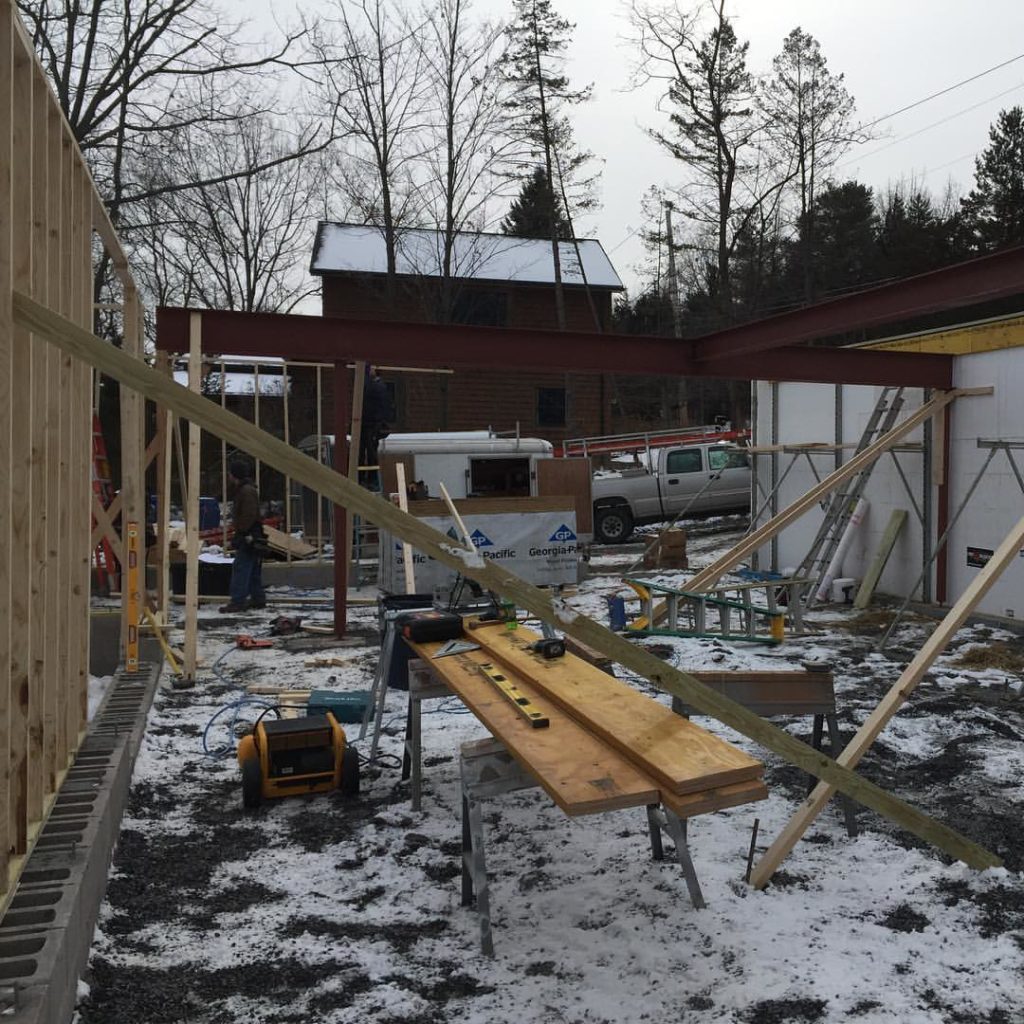 Steel going in. Sometimes with long spans, you have to move to steel.Stay tuned for more updates on the Keuka Lake Net Zero Home! And check out our friends over at Newcastle HCC!Photos courtesy of Mike DeNero, Owner of Newcastle HCC
Steel going in. Sometimes with long spans, you have to move to steel.Stay tuned for more updates on the Keuka Lake Net Zero Home! And check out our friends over at Newcastle HCC!Photos courtesy of Mike DeNero, Owner of Newcastle HCC
Comfortable, Happy, Healthy Homes: How To Get To Net-Zero
Cost-effective zero energy homes start with the design. Don't skimp on design if you want the performance without excessive cost. Nobody, I mean really, nobody, wants to live in a house that they spent hard-earned money building (or buying) and then shell out more money every year just to sit around in three sweatshirts because you refuse to turn the heat up. We want to sit in the warm sunshine, maybe drinking our coffee, reading the newspaper, and not worry about the dollars that are flying out the door. Did your mom ever yell "Do you live in a barn, close the door". Well we don't live in barns, and we don't want to live in drafty uncomfortable spaces either. We want to live in warm, cozy, happy, healthy homes. So how do we get there?One of the ways we do that is through energy modeling. During the design phase we always run our projects, especially net-zero bound projects, through our energy modeling software. I won't get into the weeds on all the data that goes into an energy model, but I will tell you what we use it for. Doing the energy modeling during the design phase allows us to evaluate different building techniques, heating systems, and performance data to come up with the best solution for your individual needs. The industry calls this technique, cost offsetting. If we can add more insulation to your walls, we can reduce the need for a central heating system. If we can reduce or eliminate the central heating system, the costs of construction go down. We like to use the term "house as a system" which means your house is a series of inter-related parts. When you change one part, if affects others. By using energy modeling software we can compare different construction techniques to come up with the best combination of different parts.Another cost offsetting technique that we love to use is orientation! So simple, and absolutely free. If we look at history, the ancient Romans knew which direction to face their buildings and how to use mass to absorb heat. Use the sun for passive solar gain, brilliant! Modern day building practices have almost completely ignored this one simple solution. In addition to orienting the house the right direction (south) we also take time to place windows to take advantage of the view while at the same time, eliminating windows where we don't need them. If we can cut down windows on the north side of the house, the performance of the home skyrocket. That doesn't mean we live with dark spaces. One of my favorite solutions to fewer windows is interior windows. A great way to add character and style to a house is to pick an old window and install it in an interior wall between a room with lots of natural light and one with low or no daylight. This is especially effective for lighting interior stairways without adding skylights to the roof. If you've been following my blog or know me in person, you've probably heard me say "windows never pay for themselves". So why pay a lot of money for a poor performing building material instead of spending time during the design process to pick and place the right window in the right location. Should you order triple pane windows from Poland? Maybe? Should you take the time to maximize windows in the best locations and eliminate them where not needed? Absolutely! Can you hit Net-Zero with builder grade double pane windows from a major window manufacturer? Yup! Are you starting to see the forest through the trees? Getting to 0 from 100 is all about design.To get all the way down to 0 though, you have to produce as much energy on your site as you use. We can super insulate the building, eliminate thermal bridging, reduce air infiltration, orient the house the correct way, but what we can't do is completely eliminate energy use. So we need to produce energy on site to offset the usage. If we oriented the house the correct direction, adding solar panels is usually the quickest and easiest on site power generator available. Some people, depending on location, may be able to harness wind power or hydro, but the average homeowner should be able to take advantage of PV. With the government subsidizing solar installations it's getting more cost-effective to add your own power generation to your home. Between off the grid battery banks and grid-tied net metering, there is a way to harness the power of the sun to produce electricity.If you're reading this article and thinking "but all these super efficient houses are ugly" you should go back and read one of my previous blog posts on selecting the right architect. We all have different taste, and if you select the right architect for your project it can be cost-effective, efficient, and beautiful. And here you thought building a house was simple, little did you know it's one of those giant jigsaw puzzles, that until you get all the parts lined up just right, you just have a pile of building materials that may or may not turn into a happy healthy home.There are lots of different ways to get to zero energy. So like I said at the very beginning, spend time during the design to get all the details right. You can simply monitor your actual energy usage for a year and prove that you made more energy then you used. Or you can take advantage of one of the certification programs out there for meeting the zero energy threshold. Here are a few:ProgramsLiving Future Institute: Zero Energy Building CertificationDepartment of Energy: Zero Energy Ready HomeNYSERDA Net Zero Energy Homes Low Rise New Construction ProgramLEED Zero Net Energy HomesIf you read this article and you're disappointed I didn't tell you exactly how to get to net-zero with all the tech trade industry specifics, feel free to reach out to me via email. I'm always happy to get into the weeds on how the technologies work and how they can be combined. All you need to do is run into one of my past students to know, I love to talk about this stuff! So reach out, leave me a comment, send me an email, start a discussion with me on Facebook. I promise, I'll respond!~ Emily Mottram, Mottram Architecture


